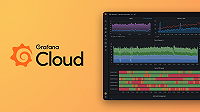Caution
Grafana Alloy is the new name for our distribution of the OTel collector. Grafana Agent has been deprecated and is in Long-Term Support (LTS) through October 31, 2025. Grafana Agent will reach an End-of-Life (EOL) on November 1, 2025. Read more about why we recommend migrating to Grafana Alloy.
This is documentation for the next version of Grafana Agent Documentation. For the latest stable release, go to the latest version.
Agent Management - Experimental
Agent Management is under active development. Backwards incompatible changes to its API are to be expected. Feedback is much appreciated. This is a feature that MAY NOT make it production.
Agent Management enables centralized management of fleets of Grafana Agents.
In this mode, Grafana Agent polls and dynamically reloads its configuration from a remote API server.
Remote Configurations are composed of a base configuration and a set of snippets. Snippets are applied conditionally via label matching.
Configuration
Agent Management can be used by passing the flag -enable-features=agent-management. When enabled, the file referred to -config.file will be loaded as an agent management configuration file.
Agent Management configuration files are YAML documents which conform the following schema:
API
Grafana Agents with Agent Management enabled continuously poll the API server for an up-to-date configuration. The API server is expected to implement a GET /agent-management/api/agent/v2/namespace/:namespace/remote_config HTTP endpoint returning a successful response with the following body format:
# The base configuration for the Agent.
base_config: |
<grafana_agent_config>
# A set of snippets to be conditionally merged into the base configuration.
snippets:
[ <snippet_name>: <snippet_content> ... ]grafana_agent_config
This is a standard Grafana Agent static mode configuration. Typically used to configure the server, remote_writes, and other global configuration.
snippet_content
The snippet content is a YAML document which conforms to the following schema:
# Config provides the actual snippet configuration.
config: |
[metrics_scrape_configs]:
- [<scrape_config> ... ]
[logs_scrape_configs]:
- [<promtail.scrape_config> ... ]
[integration_configs]:
[<integrations_config> ... ]
# Selector is a set of labels used to decide which snippets to apply to the final configuration.
selector:
[ <labelname>: <labelvalue> ... ]Note: More information on the following types can be found in their respective documentation pages:
Note: Snippet selection is currently done in the API server. This behaviour is subject to change in the future.
Example response body
Note: Base configurations and snippets can contain go’s text/template actions. If you need preserve the literal value of a template action, you can escape it using backticks. For example:
{{ `{{ .template_var }}` }}



